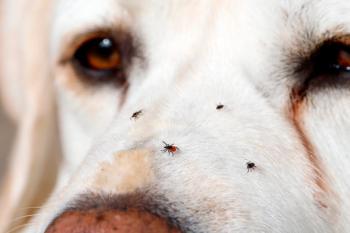
Veterinary Pain Management Without Opioids
An expert task force hopes to help veterinarians navigate the opioid shortage.
Drug shortages have become a One Health issue that plagues the healthcare sector. When medicines needed by both human and veterinary patients are sparse, human needs take precedence. This is particularly true when it comes to opioids. Despite the recent FDA announcement that it is working with Pfizer to help provide limited quantities of injectable opioids to veterinary professionals, the shortage and its effects are still being felt.
Pfizer anticipates that it will resume fulfilling all veterinary opioid orders sometime this year. In the meantime, however, veterinarians are still tasked with finding pain relief alternatives for their patients. To aid in this effort, pain management experts from around the country convened to create a white paper that offers guidance on pain management techniques that do not involve opioids. The document,
”We got people together from industry, from the colleges of veterinary medicine, as well as the specialty colleges in addition to private practitioners whose practice is largely devoted to treating pain in animals,” explained William Muir, DVM, PhD, MS, DACVEC, DACVA, a professor at Lincoln Memorial University College of Veterinary Medicine and one of the task force organizers.
Beyond providing pain management in the wake of ongoing shortages, one of the main points emphasized by the task force is that the human opioid epidemic underscores the need for the veterinary profession to actively pursue approaches that will minimize opioid use and its availability for diversion and abuse.
The task force encourages veterinary professionals to deploy individualized pain-management strategies that are best suited for a given patient, including its unique circumstances and associated risk factors. It is also suggested that less opioid use—in dose, schedule, frequency, and duration—be implemented or that a stepdown approach be taken that includes the use of partial mu and kappa agonist opioids.
It is also imperative, the task force noted, for veterinarians to be mindful of signs from clients that might suggest opioid diversion and abuse. These cases should be addressed accordingly, which may include alerting the proper authorities. The FDA also has a
In lieu of opioids, the task force encourages veterinarians to treat pain with subanesthetic doses of dissociative anesthetics, local anesthetics, anxiolytics, gabapentinoids, and anti-inflammatory drugs. Nonpharmacologic modalities, such as acupuncture, physical therapy, and cryotherapy, are discussed as possible alternatives. The group also suggests creating a Fear Free practice environment and promotes low-stress handling as ways to decrease the fear and anxiety that might exacerbate pain.
“All veterinarians have the obligation and responsibility to protect human well-being and to promote animal health and welfare and relieve animal suffering,” Dr. Muir said. “Veterinarians should, therefore, read and employ opioid-sparing techniques and practices for the betterment of man and animals.”
Newsletter
From exam room tips to practice management insights, get trusted veterinary news delivered straight to your inbox—subscribe to dvm360.






